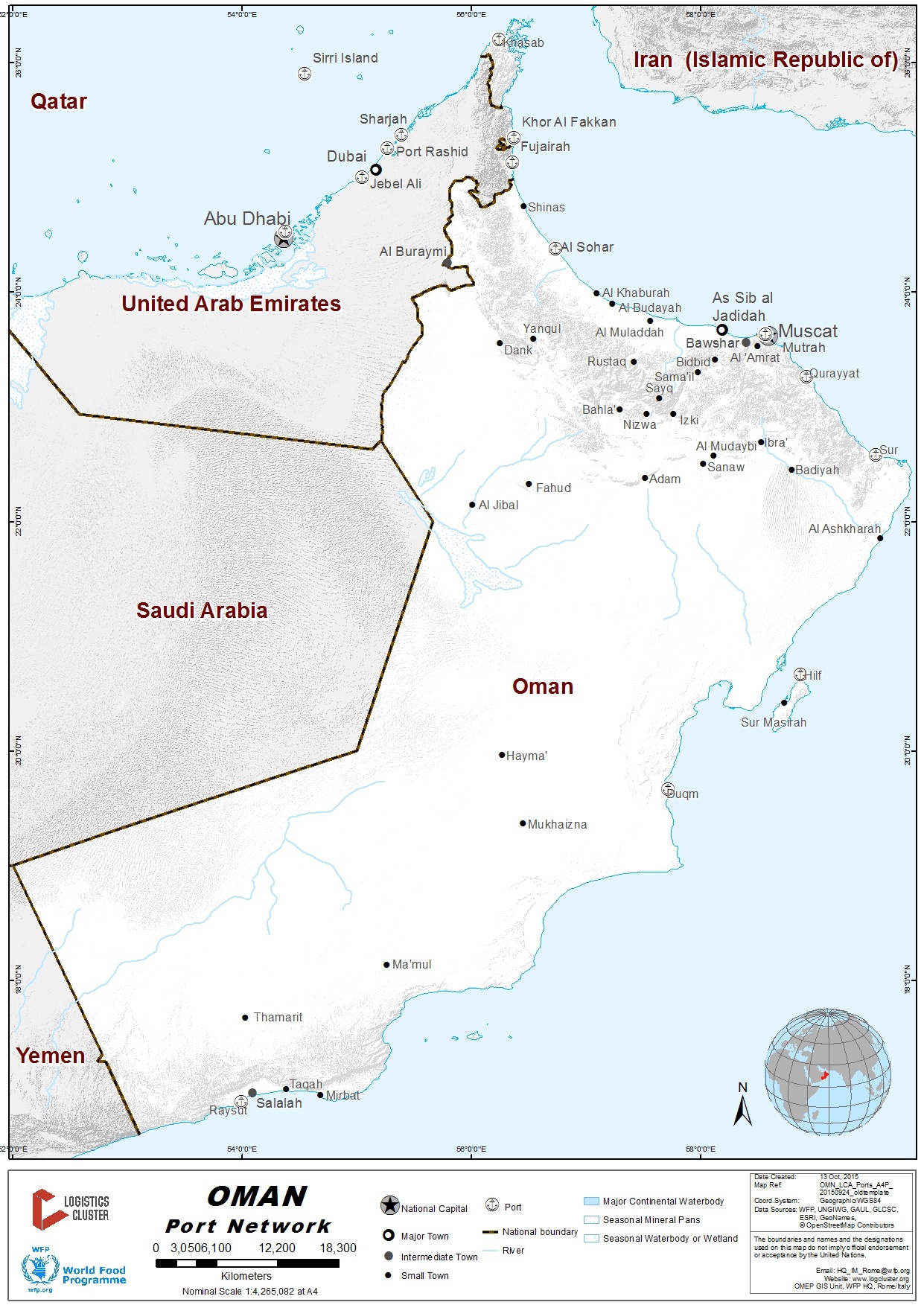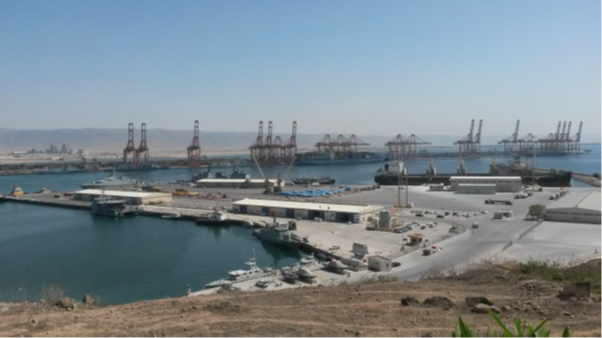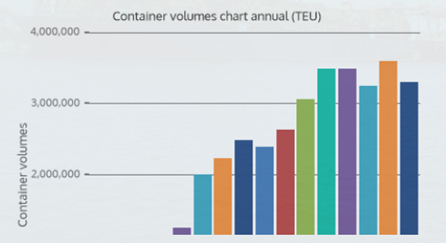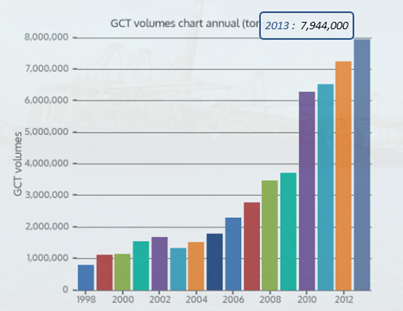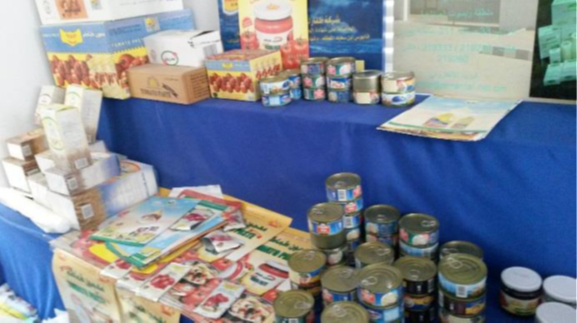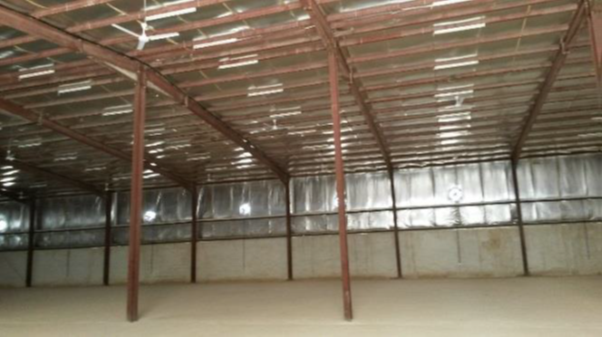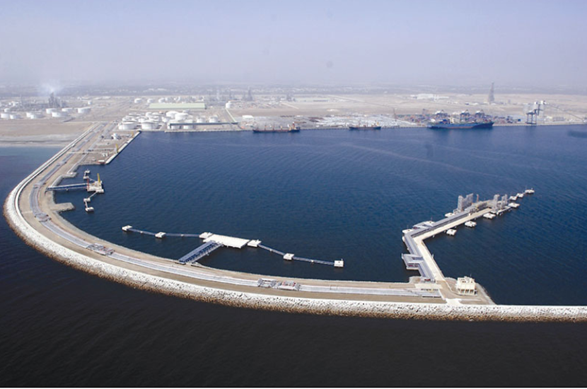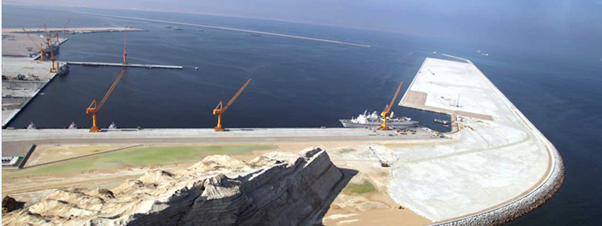2.1.1 Oman Port of Salalah
Maritime Database Information on Port of Salalah
Port Overview
The Port of Salalah is partly owned and managed by APM
Terminals. It is operating since 1998 and is established as a
leading transhipment hub, handling over 3 million TEUs per year.
The port is strategically positioned close to the free zone and
industrial park and offers both land, sea and air connectivity.
Given the close proximity and short sailing time to Yemen, the Port
of Salalah offers a strategic location for an additional staging
area for the Yemen crisis.
Arguably, Salalah can also be considered as a transit hub for the
Global Commodity Management Facility (GCMF, former FPF) for the
planning zone in the sub-region.
|
Port Location and Contacts |
|
|---|---|
|
Country |
Sultanate of Oman |
|
Province or District |
State : Dhofar Town : Salalah |
|
Latitude |
16.93333 |
|
Longitude |
54 |
|
Managing Company or Port Authority (If more than one operator, break down by area of operation) |
APM Terminals |
|
Management Contact Person |
David Gledhill , CEO |
Port Picture
Description and Contacts of Key Companies
Major shipping lines are operating their services on a weekly basis into the Red Sea and regions of East / West Africa and Asia. Feeder operator services from MSC, CMA-CGM, and Maersk, Hyundai shipping line and APL are available and some (MSC, CMA-CGM for now) offer services to Hodeida and Mukala directly or via KAP with short distances 4-5 days transit time.
4.4 Oman Port and Waterways Company Contact List
Port Performance
|
Handling Figures |
Year 2013 |
|---|---|
|
Container Traffic (TEUs) |
3,300,000 |
|
Handling Figures General Cargo |
Year 2013 |
|---|---|
|
Break bulk (MT) |
7,944,000 |
Berthing Specifications
Pilotage:
Pilotage is compulsory and pilots may board from launch or tug and are available 24 hours. Pilots can be provided at 30 minutes’ notice.
Fairway & Approach Channel:
Port of Salalah is entered from NE between East Breakwater and the Container Terminal. Vessels approaching from the Fair way pass between a pair of light buoys (Port and Starboard) and then between the head of East Breakwater and a light buoy 0.2nm NW.
Tidal Range & Flow:
Tidal range averages 1.0m to 2.0m however; during the monsoon season (June to August) waves can be up to 4.0 at max.
Dock Water Density
Density: 1.025.
|
Berth No |
Length (m) |
MPD* |
|---|---|---|
|
1, 2, 3, 4 |
307 |
15.5 |
|
5, 6 |
488 |
17.5 |
|
21, 22, 23 |
173 |
9 |
|
24 |
200 |
6.8 |
|
25 |
115 |
4.3 |
|
26, 27, 28 |
115 |
4.1 |
|
29 |
260 |
2.6 |
|
30, 31 |
300 |
15 |
|
Oil Jetty |
130 |
10.0 |
|
Ramp Lct |
45 |
2.5 |
* MPD: Maximum Permissible Draught
- Berths 1 to 6 are container berths in line; therefore, larger vessels can occupy part of a second berth if necessary.
- Berths 21 to 23 are General Cargo berths in line and larger vessels can occupy part of second berth if necessary.
- Berth 24 is a General Cargo berth. Berths 25 to 29 are berths for small general cargo vessels, Dhows, and fishing Launches.
- Berths 30 & 31 are main deep draft multi-user berths.
Anchorage:
Three Anchorage areas are designated for Vessels calling at the Port of Salalah:
| Area: | Area bounded by coordinates: |
|---|---|
| Area "A" for inbound vessels awaiting berthing. |
Lat. 16°56'5 N Long 054°02'0 E |
| Area "B" for vessels requiring off shore services |
◦Lat. 16°55'5 N Long 054°04'0 E |
| Area "C" for ship to ship bunkering operations. |
◦Lat. 16°55'0 N Long 054°02'0 E |
| Area "D" for inbound large vessels waiting to be berthed. |
Lat. 16°56'0 N Long 054°04'.00 E |
Port Handling Equipment
Is the port equipment managed by the government or privately? Private (APM Terminals)
- 16 and 18 meters harbor depth
- 18.5 - 20 meters approach channel
- 800 meters outer turning basin
- Vessel tracking system
- 11 Speed loaders
- 9 Fork Lifts
- 25 Super post panamax cranes
- 68 Rubber tyre gantries
- 177 Tractors and 187 trailers
- 4 Tugs
- 4 Reach Stackers
- 6 Empty Handler
- NAVIS yard and vessel planning system
- Radio data terminals
- VHF radios
Container Freight Station
In order to meet customer requirements at a modern container terminal the Port of Salalah established a CFS (Container Freight Station) in 2002. It plays a vital role in adding value to its existing services offered at the port.
The Port of Salalah manages and operates a Container Freight Stations (CFS) within the port boundaries providing grouping services of Less than Container Loads (LCL) for exporters as well as de-consolidation services especially for importers requiring distribution.
CFS is split into Outbound and Inbound cargo.
|
Outbound Cargo |
Inbound Cargo |
|
|---|---|---|
|
|
|
Container Facilities
With major shipping lines opting for mega-size vessels, the importance of transhipment ports cannot be underestimated – especially in the current economic scenario where economies of scale deliver efficiencies and savings in significance.
Transhipment container traffic is the mainstay of our business. The Container Terminal at Port of Salalah has attracted double digit growth year-on-year during 2003-2010. Underpinning this success has been a combination of location advantages, congestion-free deep-water berths, competitive service levels and consistently high productivity.
Expansion CT Berths 7, 8, 9
Given the strong growth trends being witnessed at the Container Terminal, a major expansion could be in the offing sooner than later. An expansion of the Container Terminal as well as Terminal-2 received the government’s formal approval in 2009. Upon implementation, the upgrade will add three new berths of a total quay length of 1,350 metres. The expansion will boost the hub's quay length to 3,555 metres and crank up the port's annual container handling capacity to nine million TEU, further paving the way for Salalah's elevation into the ranks of the world's largest transhipment hubs.
Custom Clearance Formalities
Please check the following website: http://ec.europa.eu/agriculture/markets/export_refunds/forms/om.pdf
Terminal Information
An expansion project for a grain terminal with complete silos
designed for around 100.000 tons of wheat storage is in
progress.
There is no shortage of equipment or bagging possibilities. Trucks
are widely available from the nearby industrial zone and free zone,
where suppliers of veg oil, pasta and wheat flour are operating.
Jumbo bags are available and can be purchased immediately with 4-5
days delivery upon request.
There are two bulk and general cargo terminals, both for bulk and
break bulk cargo. The port can accommodate food in warehouse
facilities inside the port and extra facilities outside the port.
If requested, Mobile Storage Units (MSUs) can be temporarily set-up
for WFP operations free of charge.
Liquids held at the free zone and facilities have the potential to
create a liquids hub at port of Salalah in the future. Investments
are also ongoing in a new tank storage facilities of total capacity
6 million MT up to current capacity of one million MT. The oil
terminal is capable of accommodating vessels up to 35,000 DWT and
tankers with 10m maximum arrival draught.
A ramp for a landing craft with a 1:8 gradient, 45m in length, and
20m width at 3.0m depth is available.
SALALAH FREE ZONE AND INDUSTRIAL ESTATE
The free zone and the industrial estate is ready to assist WFP
with space if necessary and for any assistance needed with new
suppliers.
Different types of food suppliers can provide tomato paste, canned
fish, bottled water, veg oils and pasta. Further, all types of
medical equipment are available.
Warehousing in Salalah
The mission did not carry out an exhaustive warehouse capacity assessment in Salalah but, as an indication, visited a warehousing complex at Halabaazar where 13,000 sqm are available and are most currently empty; this capacity is divided between warehouses ranging from 1200sqm to 1500 sqm in size. Premises are clean and spacious, ventilated and isolated. AC and forklifts can be arranged on demand. Prices are negotiable and can offer long term contracts 3-4 years.
Halaabazar warehouses (partial view), Salalah 01 Jun 2015
Halaabazar warehouse, Salalah 01 Jun 2015
Halaabazar warehouses (partial view), Salalah 01 Jun 2015
Port Security
Salalah Port serves as a hub for the anti-piracy task force. It is also steadfastly adhere to international maritime safety and cargo security charters, notably the CSI and ISPC codes. Salalah Port has also been rated a US government's Secure Freight Initiative Charter port and Pilot site.
2.1.2 Oman Port of Sohar
Maritime Database information on Port of Sohar
Port Overview
The Port of Sohar, located north of Muscat had a booming growth since its opening in 2002. It is composed of three main sectors: one for petroleum, one for industrial cargoes and steel and one for general cargo and containers. The port is complimented by a free zone for industrial development. The port is situated in the Barka region, which is the main logistics hub. All containerized services previously handled by Muscat port have now been transferred to Sohar port. Muscat has now became a port for cruise ships, while 90% of domestic cargo is imported via Sohar port.
The port is mainly handling bulk cargo, steel, cement and liquids on a special terminal for a Brazilian company. It is also strategically located to open to new business with Iran. Construction works of a food terminal, a railway and silos are on-going. The port will be connected to the GCC railway network, and the connection with Abu Dhabi will be complete by 2018-19.
The container terminal is operational and currently handling 11.000 TEUs a year, with 11 shipping lines calling on a weekly basis and the capacity to receive large container ships. The port is also going through a huge construction for other business and large investments both from the Oman Government, as well as the private sector. Between 4 to5 hectares of space is available at the free zone. A sugar refinery plant in under construction, together with silos for flour mills, which will be available within 16 to 18 months. Finally, warehouses and maritime services from husbandry services to bunkers are also available.
The Port of Sohar is an equal, joint venture with the Port of Rotterdam.
Sohar Port and Freezone Website
|
Port Location and Contacts |
|
|---|---|
|
Country |
Oman |
|
Province or District |
Liwa |
|
Port's Complete Name |
Sohar Port |
|
Latitude |
24.33333 |
|
Longitude |
56.75 |
|
Managing Company or Port Authority (If more than one operator, break down by area of operation) |
Sohar Industrial Port Co |
|
Management Contact Person |
Andre Toet, Chief Executive Officer |
Port Picture
Description and Contacts of Key Companies
4.4 Oman Port and Waterways Company Contact List
Port Performance
| Port Performance 2015 |
Q1 |
|
|---|---|---|
|
Dry Bulk |
FRT |
5,302,483 |
|
Break Bulk(*) |
FRT |
419,465 |
|
Liquid Bulk |
FRT |
4,355,326 |
|
Subtotal |
FRT |
10,077,274 |
|
Container |
Units |
85,365 |
|
Container |
TEUS |
123,533 |
|
Container(***) |
FRT |
1,193,329 |
|
Roro(**) |
Units |
n/a |
|
Total |
FRT |
11,270,603 |
|
SOHAR Port Vessel Calls |
||
|
Dry Bulk |
74 |
|
|
Break Bulk(*) |
59 |
|
|
Liquid Bulk |
196 |
|
|
Containers(*) |
103 |
|
|
Anchorage Services |
30 |
|
|
Roro(**) |
n/a | |
|
Vessel Calls |
462 |
|
| Port Performance 2015 |
Q1 |
Q2 |
Q3 |
Q4 |
|
|---|---|---|---|---|---|
|
Dry Bulk |
FRT |
4,838,754 |
5,399,749 |
6,407,469 |
8,993,756 |
|
Break Bulk(*) |
FRT |
270,028 |
251,492 |
404,419 |
410,758 |
|
Liquid Bulk |
FRT |
3,025,418 |
3,734,802 |
3,577,320 |
4,527,520 |
|
Subtotal |
FRT |
8,134,200 |
9,386,043 |
10,389,208 |
13,932,034 |
|
Container |
Units |
35,275 |
39,320 |
63,101 |
93,743 |
|
Container |
TEUS |
47,621 |
55,378 |
93,348 |
134,316 |
|
Container(***) |
FRT |
460,019 |
534,951 |
901,742 |
1,297,493 |
|
Roro(**) |
Units |
n/a | n/a | n/a |
122,496 |
|
Total |
FRT |
8,594,219 |
9,920,994 |
11,290,950 |
15,229,527 |
|
SOHAR Port Vessel Calls |
|||||
|
Dry Bulk |
n/a |
63 |
67 |
84 |
101 |
|
Break Bulk(*) |
n/a |
52 |
49 |
53 |
69 |
|
Liquid Bulk |
n/a |
181 |
197 |
200 |
220 |
|
Containers(*) |
n/a |
73 |
84 |
75 |
80 |
|
Anchorage Services |
n/a |
15 |
35 |
35 |
24 |
|
Roro(**) |
n/a | n/a | n/a | n/a |
265 |
|
Vessel Calls |
n/a |
384 |
432 |
447 |
494 |
| Port Performance 2013 |
Q1 |
Q2 |
Q3 |
Q4 |
|
|---|---|---|---|---|---|
|
Dry Bulk |
FRT |
6,715,558 |
5,316,072 |
6,200,161 |
7,419,207 |
|
Break Bulk(*) |
FRT |
264,103 |
216,937 |
227,849 |
177,717 |
|
Liquid Bulk |
FRT |
3,988,822 |
4,353,672 |
4,557,802 |
3,916,012 |
|
Subtotal |
FRT |
10,968,483 |
9,886,681 |
10,985,812 |
11,512,936 |
|
Container |
Units |
35,670 |
40,978 |
32,391 |
34,486 |
|
Container |
TEUS |
55,661 |
61,232 |
45,556 |
47,369 |
|
Container(***) |
FRT |
537,685 |
591,501 |
440,071 |
457,585 |
|
Roro(**) |
Units |
n/a | n/a | n/a |
61,635 |
|
Total |
FRT |
11,506,168 |
10,478,182 |
11,425,883 |
11,970,521 |
|
SOHAR Port Vessel Calls |
|||||
|
Dry Bulk |
81 |
80 |
83 |
85 |
|
|
Break Bulk(*) |
63 |
55 |
44 |
40 |
|
|
Liquid Bulk |
206 |
205 |
247 |
225 |
|
|
Containers(*) |
87 |
88 |
72 |
64 |
|
|
Anchorage Services |
15 |
29 |
63 |
54 |
|
|
Roro(**) |
78 |
||||
|
Vessel Calls |
452 |
457 |
509 |
468 |
|
| Port Performance 2012 |
Q1 |
Q2 |
Q3 |
Q4 |
|
|---|---|---|---|---|---|
|
Dry Bulk |
FRT |
3,712,862 |
6,774,428 |
7,617,884 |
8,009,429 |
|
Break Bulk(*) |
FRT |
190,299 |
153,367 |
265,655 |
339,440 |
|
Liquid Bulk |
FRT |
3,610,499 |
3,603,244 |
3,649,402 |
4,015,562 |
|
Subtotal |
FRT |
7,513,660 |
10,531,039 |
11,532,941 |
12,364,431 |
|
Container |
Units |
33,063 |
44,054 |
28,911 |
30,303 |
|
Container |
TEUS |
49,785 |
58,200 |
42,821 |
48,012 |
|
Container(***) |
FRT |
480,921 |
562,210 |
413,648 |
463,796 |
|
Roro(**) |
Units |
73,548 |
|||
|
Total |
FRT |
7,994,581 |
11,093,249 |
11,946,589 |
12,828,227 |
|
SOHAR Port Vessel Calls |
|||||
|
Dry Bulk |
69 |
79 |
86 |
86 |
|
|
Break Bulk(*) |
41 |
45 |
59 |
73 |
|
|
Liquid Bulk |
208 |
226 |
236 |
216 |
|
|
Containers(*) |
60 |
68 |
75 |
97 |
|
|
Anchorage Services |
23 |
47 |
47 |
9 |
|
|
Roro(**) |
n/a | n/a | n/a |
68 |
|
|
Vessel Calls |
401 |
465 |
503 |
481 |
|
* Project/General cargo: The Figures have been included in break
bulk.
** These indicative figures are for the respective year. Please
note that these values will change over time and can vary.
Seasonal Constraints
Tides
- Tidal streams NNW and SSE
- Low Astronomical Tide 0,0 metre CD
- Mean Low Low Water +0.9 metre CD
- Mean High Low Water +1.5 metre CD
- Mean Sea Level +2.0 metre CD
- Mean Low High Water +2.5 metre CD
- Mean High High Water +2.9 metre CD
- High Astronomical Tide +3.4 metre CD
- Currents are variable and light; mostly 0.25 ti 0.75 knots.
Weather
Summers are generally hot (35-45 degrees Celsius) accompanied by high humidity. Winters are cooler (20-27 degrees Celsius).
Winds are between NE and SW, light to moderate.
All vessels moored in the port or berthing shall take such precautions in severe weather as may be necessary and reasonable, and as may be ordered by the harbour master.
Discharge Rates and Terminal Handling Charges
Relevant tariffs / rates for Sohar Port and Freezone
Port dues shall be paid in US Dollar (US$) or Omani Rial (OMR) by the agents of the vessel. Payment of the port dues must take place before the departure of the vessel or the agents of the vessel must have given a bank guarantee for the payable port dues. Payment of the port dues will take place in Muscat, Sultanate of Oman at
Oman Arab Bank, Ruwi Main Branch
Account number 3101-007970-500
Please mention the invoice number (vessel call number) when payment is made.
Project Cargo Surcharge
The project cargo surcharge is US$1.00 per freight ton (w/M) on project cargoes destined for projects inside SOHAR Port and Freezone concession area.
The surcharge will be levied via the shipping agent. Project Cargoes are defined as all material and equipment that will be used for the construction of projects inside SOHAR Port and Freezone concession area. Pipes and related equipment for pipelines outside SOHAR Port and Freezone concession area will not be affected by the surcharge. Cargoes for receivers/shippers outside SOHAR Port and Freezone concession area will also not be affected by the surcharge.
Procedure
Shipping agents should adhere to the following:
- Submit a certified copy of the vessels’ cargo manifest to SIPC Sohar Office marking it for the attention of the harbour master. This should be done at least 72 hours prior to ETA.
- A letter from the agent on the company letterhead should accompany the cargo manifest. This should state the freight tons and full consignee/receiver details.
- If the agent is in doubt whether the cargo is subject to a surcharge, then the commercial manager of SOHAR Port and Freezone should be contacted in writing only at least 72 hours prior to ETA. Full details of the consignee and/or notifying party must be provided.
- All invoices are payable prior to the vessel’s departure, but a deposit arrangement can be discussed.
Structure of Costs
SOHAR Port and Freezone is managed according to the landlord port model.
Visiting vessels should consider the following:
- Marine services (tugs, pilots) are provided by Svitzer and these are charged by SIPC.
- AMNAS (Arabian Maritime and Navigational Aids Services CO LLC) levies for navigational aids.
- Linesmen are charged by SIPC on behalf of Al Batina International.
- Every stevedoring company charges separately for its activities.
- Every vessel is obliged to pay AMNAS (Arabian Maritime and Navigational Aids Services Co LLC) a fee for navigational aids in the territorial waters of Oman (Royal Decree 81/2003; Ministerial Circulation No 218/2003). These will be levied in the first port of call in Oman.
General Cargo Handling Berths
|
Specific Berth Information |
OOT |
Steinweg |
OICT |
Sohar Alum |
L&T |
|---|---|---|---|---|---|
|
Cargo Type |
Liquid Bulk |
General |
Containers |
Liquid/Solid |
_ |
|
Berth Number/Name |
Jetty C1,A, AA1-2 |
4,5,6 |
7,8 |
9 |
Harmool 1-2 |
|
Depth |
16,0 m |
16,0 m |
16,0 m |
16 m |
10 m |
|
Length |
C1-268 m |
700 m |
500 m |
301 m |
300 |
|
Bollard Type |
T- Head |
T- Head |
T- Head |
T- Head |
T- Head |
|
Bollard Distance |
C1- 29m |
25 m |
25 m |
21.6 |
Rear-10 |
|
Bollard SWL |
C1-30T |
100T |
100T |
120T |
Rear-125 |
|
Nature of Seabed |
Coarse Sand |
Coarse Sand |
Coarse Sand |
Coarse Sand |
Coarse Sand |
|
Tidal Difference LAT-HAT |
3.4 m |
3.4 m |
3.4 m |
3.4 m |
3.4 m |
|
Berth Restrictions |
|||||
|
Length Max/Min |
C1-268/61 |
- |
- |
- |
- |
|
Width (Max) |
C1- 43 m |
- |
- |
- |
- |
|
DWT Max/Min |
C1-107,000/1,000 |
- |
- |
- |
- |
|
Transverse Approach Speed |
0.15 m/sec |
- |
- |
- |
- |
|
Berthing Angle |
C1/A - 6 deg |
- |
- |
- |
- |
Customs Guidance
Sohar Port and Freezone port operating procedures
2.1.3 Oman Port of Duqm
Maritime-database information on Port of Duqm ts.php
Port Overview
The Port and City of Duqm project has impressive plans, and
long-term vision to establish a major logistical hub for the GCC.
Given its strategic location to the Arabia Sea, it is well
connected to Asia, Africa, the Middle East; it also at the crossing
point of all shipping lines to Europe, Australia and the
Americas.
Currently, the Port and the City are under construction. The Port
will be composed of a gigantic container and general cargo
terminal, an oil terminal, a dry dock and possibilities for further
extension. Duqm Port will also be connected to the GCC railway,
with railway sidings on the quay.
The City will be composed of residential areas, an industrial park,
recreational and educational areas, and a touristic area.
|
Port Location and Contacts |
|
|---|---|
|
Country |
Oman |
|
Province or District |
Duqm |
|
Port's Complete Name |
Port of Duqm |
|
Latitude |
19.66667 |
|
Longitude |
58 |
|
Managing Company or Port Authority (If more than one operator, break down by area of operation) |
SAOC |
|
Management Contact Person |
Mr. Anwar Kahlan Al Battashi, Manager, Urban Planning |
Port Picture
Description and Contacts of Key Companies
4.4 Oman Port and Waterways Company Contact List
Port Performance
Conceived as a multipurpose facility, Port of Duqm will cater to
a wide range of cargoes and vessels. Envisioned in the master-plan
are dedicated terminals for General Cargo, Containerised Cargo,
Liquids and Petroleum Products, and Bulk Commodities. Construction
of the marine substructure of a 2.2-km-long commercial quay has
been completed. The quay, suitably fitted out and equipped, will be
rolled out in stages during the 2014-15 timeframe.
Importantly, there is provision to add a further 10 kilometers of
commercial berths during Phase 2 of the port’s development.
Depending upon specific demand, these additional berths will be
earmarked for general, container, liquids and bulk cargo as the
case may be.
Separately, construction is well underway on the quay wall designated exclusively for use by government vessels, such as those belonging to the Royal Yacht, Royal Oman Police Coast Guard, Royal Navy of Oman, and Sultan’s Special Forces. The government berths will come into service in 2014.
General Cargo Terminal:
A 300-metre length of the commercial quay was officially
inaugurated in March 2013, effectively marking the formal launch of
commercial operations at the Port of Duqm. The quay has been
equipped with a range of cargo handling gear suited for the
handling of a wide variety of general and project cargoes.
Container Terminal:
A 1,600-metre length of the commercial quay has been set aside for
the development of a dedicated Container Terminal with a throughput
capacity of 3.5 million TEUs.
Liquids & Oil Terminal:
A tender for the design of a Liquids & Oil Terminal on the northern
breakwater will be floated soon. This facility will primarily serve
the feedstock and export requirements of a major refinery and
petrochemicals complex planned at the adjoining SEZ. The terminal
is proposed to be brought into operation in parallel with the
launch of the refinery in 2017.
Minerals / Bulk Commodities Jetty:
Port of Duqm will play a key role as a catalyst in the
commercialization of the potentially vast minerals resources of the
Wusta region. A major Minerals Jetty, with a capacity to handle up
to 5 million tons per annum of commodities, will be built in the
first phase of the port’s development. This facility will either be
operated by Port of Duqm Company or by an interested private
investor. Conveyor systems will link the quay directly to
stockyards planned well away from the jetty.
Discharge Rates and Terminal Handling Charges
http://www.portduqm.com/Tariff/index.html#Charges-Table
|
Item |
Services |
Unit |
Rate OMR. |
Minimum Charge OMR. |
Overtime applicable(Fridays & Public Holidays) |
Payer |
|
|
1100 |
Port Dues entering the Port |
||||||
|---|---|---|---|---|---|---|---|
|
1110 |
Vessels entering the Port for handling cargo or passengers (per Call for an initial period of 72 hr) |
GT |
0.013 |
40.000 |
Shipping lineping line |
||
|
1111 |
Vessels entering the Port for handling cargo or passengers (per Call for each additional started 24 hr after initial period) |
GT |
0.007 |
40.000 |
Shipping line |
||
|
1120 |
Vessels entering the Port for the ODC Dry-Dock (per Call) |
GT |
0.013 |
40.000 |
Shipping line |
||
|
1130 |
Vessels in distress or requiring medical assistance (per Call for an initial period of 72 hr) |
N/A |
|||||
|
1131 |
Vessels in distress or requiring medical assistance (per Call for each additional started 24 hr after initial period) |
GT |
0.007 |
40.000 |
Shipping line |
||
|
1140 |
Vessels entering the Port for any other reason (per Call for every started 24 hr) |
per GT |
0.007 |
40.000 |
Shipping line |
||
|
1199 |
Exemptions for all items 1100 - All Chartered Tugs by ODC Dry-Dock for their operations in Duqm |
||||||
|
1200 |
Port Dues for Anchorage Area (outside Port breakwaters) |
||||||
|
1210 |
Vessels anchoring in the Anchorage Area (per Call for an initial period of 72 hr) |
N/A |
|||||
|
1211 |
Vessels anchoring in the Anchorage Area (per Call for each additional started 24 hr after initial period) |
GT |
0.007 |
40.000 |
Shipping line |
||
|
1220 |
Vessels anchoring in the Anchorage Area before entering the Port for handling cargo or passangers (per Call for an initial period of 72hr) |
GT |
0.013 |
40.000 |
Shipping line |
||
|
1221 |
Vessels anchoring in the Anchorage Area before entering the Port for handling cargo or passangers (per Call for each additional started 24hr after initial period) |
GT |
0.007 |
40.000 |
Shipping line |
||
|
1230 |
Vessels anchoring in the Anchorage Area before entering the Port for the ODC Dry-Dock (per Call for an initial period of 72hr) |
GT |
0.013 |
40.000 |
Shipping line |
||
|
1231 |
Vessels anchoring in the Anchorage Area before entering the Port for the ODC Dry-Dock (per Call for each additional started 24hr after initial period) |
GT |
0.007 |
40.000 |
Shipping line |
||
|
1240 |
Vessels anchoring in the Anchorage Area after leaving the Port |
GT |
0.007 |
40.000 |
Shipping line |
||
|
Pilotage |
|||||||
|
2100 |
Pilotage for -entering+exiting- the Port (per call) |
||||||
|
2110 |
Vessel GT from 200 till 6,000 |
140.000 |
+100% |
Shipping line |
|||
|
2111 |
Vessel GT from 6,001 till 12,000 |
180.000 |
+100% |
Shipping line |
|||
|
2112 |
Vessel GT from 12,001 till 30,000 |
240.000 |
+100% |
Shipping line |
|||
|
2113 |
Vessel GT from 30,001 till 60,000 |
440.000 |
+100% |
Shipping line |
|||
|
2114 |
Vessel GT from 60,001 till 120,000 |
640.000 |
+100% |
Shipping line |
|||
|
2115 |
Vessel GT from 120,000 |
1,040.000 |
+100% |
Shipping line |
|||
|
2199 |
Exemptions for all items 2100 - Vessel GT less than 200 |
||||||
|
2200 |
Pilotage for entering or exiting the Dry-Dock of ODC (per move) |
||||||
|
2210 |
Vessel GT from 200 till 6,000 |
70.000 |
+100% |
ODC |
|||
|
2211 |
Vessel GT from 6,001 till 12,000 |
90.000 |
+100% |
ODC |
|||
|
2212 |
Vessel GT from 12,001 till 30,000 |
120.000 |
+100% |
ODC |
|||
|
2213 |
Vessel GT from 30,001 till 60,000 |
220.000 |
+100% |
ODC |
|||
|
2214 |
Vessel GT from 60,001 till 120,000 |
320.000 |
+100% |
ODC |
|||
|
2215 |
Vessel GT from 120,000 |
520.000 |
+100% |
ODC |
|||
|
2299 |
Exemptions for all items 2200 - Vessel GT less than 200 |
||||||
|
2300 |
Pilotage for -entering+exiting- the Port for Sea trials of ODC (per call) |
||||||
|
2310 |
Vessel GT from 200 till 6,000 |
140.000 |
+100% |
Shipping line |
|||
|
2311 |
Vessel GT from 6,001 till 12,000 |
180.000 |
+100% |
Shipping line |
|||
|
2312 |
Vessel GT from 12,001 till 30,000 |
240.000 |
+100% |
Shipping line |
|||
|
2313 |
Vessel GT from 30,001 till 60,000 |
440.000 |
+100% |
Shipping line |
|||
|
2314 |
Vessel GT from 60,001 till 120,000 |
640.000 |
+100% |
Shipping line |
|||
|
2315 |
Vessel GT from 120,000 |
1,040.000 |
+100% |
Shipping line |
|||
|
2399 |
Exemptions for all items 2300 - Vessel GT less than 200 |
||||||
|
2400 |
Pilotage for movement inside the Port (per Move) |
||||||
|
2410 |
Vessel GT from 200 till 6,000 |
70.000 |
+100% |
Shipping line |
|||
|
2411 |
Vessel GT from 6,001 till 12,000 |
90.000 |
+100% |
Shipping line |
|||
|
2412 |
Vessel GT from 12,001 till 30,000 |
120.000 |
+100% |
Shipping line |
|||
|
2413 |
Vessel GT from 30,001 till 60,000 |
220.000 |
+100% |
Shipping line |
|||
|
2414 |
Vessel GT from 60,001 till 120,000 |
320.000 |
+100% |
Shipping line |
|||
|
2415 |
Vessel GT from 120,000 |
520.000 |
+100% |
Shipping line |
|||
|
2499 |
Exemptions for all items 2400 - Vessel GT less than 200 |
||||||
|
2500 |
Pilot kept waiting through any fault of the vessel or vessels agent or cancellation of pilot ordering at arrival (within 3 hours before ETA) or departure (within 3 hours before ETD) |
||||||
|
2510 |
Pilot kept waiting through any fault of the vessel or vessels agent |
per hr |
35.000 |
+100% |
Shipping line |
||
|
2520 |
Pilot kept waiting through any fault of the Dry-Dock of ODC |
per hr |
35.000 |
+100% |
ODC |
||
|
2600 |
Pilot launch for entering the Port for any other reason than for the ODC Dry-Dock |
||||||
|
2610 |
Assistance per Pilot boat or Launching of Pilot |
per hr |
180.000 |
+100% |
Shipping line |
||
|
Tug Services |
|||||||
|
3100 |
As per Tug Matrix of Port Rules and Regulations Annex 7 |
||||||
|
3110 |
Assistance per Tug #1 of 45 Bollard pull, for entering and leaving the Port for any other reason than for the ODC Dry-Dock |
per hr |
180.000 |
+100% |
Shipping line |
||
|
3111 |
Assistance per Tug #2 of 45 Bollard pull, for entering and leaving the Port for any other reason than for the ODC Dry-Dock |
per hr |
180.000 |
+100% |
Shipping line |
||
|
3112 |
Assistance per Tug #3 of 45 Bollard pull, for entering and leaving the Port for any other reason than for the ODC Dry-Dock |
per hr |
180.000 |
+100% |
Shipping line |
||
|
3200 |
Cancellation of tugs ordering at arrival (3 hours before ETA) or departure (3 hours before ETD) |
||||||
|
3210 |
Assistance per Tug #1 of 45 Bollard pull, for entering and leaving the Port for any other reason than for the ODC Dry-Dock |
180.000 |
+100% |
Shipping line |
|||
|
3211 |
Assistance per Tug #2 of 45 Bollard pull, for entering and leaving the Port for any other reason than for the ODC Dry-Dock |
180.000 |
+100% |
Shipping line |
|||
|
3212 |
Assistance per Tug #3 of 45 Bollard pull, for entering and leaving the Port for any other reason than for the ODC Dry-Dock |
180.000 |
+100% |
Shipping line |
|||
|
(Un)Mooring |
|||||||
|
4100 |
(Un)Mooring (per move) |
||||||
|
4110 |
Mooring and Unmooring of Vessels by Port crew |
GT |
0.002 |
40.000 |
+100% |
Shipping line |
|
|
4200 |
Mooring gang kept waiting through any fault of the vessel or vessels agent |
||||||
|
4210 |
Mooring gang kept waiting through any fault of the vessel or vessels agent |
per hr |
30.00 |
+100% |
Shipping line |
||
|
4399 |
Exemptions for all items 4100 - Vessel GT less than 200 |
||||||
|
Ancillary Services |
|||||||
|
5100 |
Vessel Traffic Control and Tower services (per call) |
||||||
|
5110 |
Vessels of Tug-Barge/Pontoon combinations entering the Port for any reason |
GT |
0.002 |
40.000 |
Shipping line |
||
|
5199 |
Exemptions for all items 5100 - All Chartered Tugs by ODC Dry-Dock for their operations in Duqm |
||||||
|
5200 |
Pollution Levy and Waste collection fee |
||||||
|
5210 |
Pollution Levy for any Vessel entering the Port (per Call) |
22.000 |
Shipping line |
||||
|
5230 |
Solid Domestic Waste collection |
to be defined |
to be defined |
Shipping line |
|||
|
5231 |
Solid Hazardous Waste collection |
to be defined |
to be defined |
Shipping line |
|||
|
5232 |
Marpol (slop and sludge) Waste Collection |
to be defined |
to be defined |
Shipping line |
|||
Berthing Specifications
Berth Hire
|
Item |
Services |
Unit |
Rate OMR. |
Minimum Charge OMR. |
Overtime applicable(Fridays & Public Holidays) |
Payer |
|
6100 |
For bringing a ship alongside the Commercial Quay |
|||||
|---|---|---|---|---|---|---|
|
6110 |
Vessel GT from 0 till 200 |
per 24hr |
150.000 |
n/a | n/a |
Shipping line |
|
6111 |
Vessel GT from 201 till 6,000 |
per 24hr |
200.000 |
n/a | n/a |
Shipping line |
|
6112 |
Vessel GT from 6,001 till 12,000 |
per 24hr |
300.000 |
n/a | n/a |
Shipping line |
|
6113 |
Vessel GT from 12,001 till 30,000 |
per 24hr |
400.000 |
n/a | n/a |
Shipping line |
|
6114 |
Vessel GT from 30,001 till 60,000 |
per 24hr |
600.000 |
n/a | n/a |
Shipping line |
|
6115 |
Vessel GT from 60,001 till 120,000 |
per 24hr |
800.000 |
n/a | n/a |
Shipping line |
|
6116 |
Vessel GT from 120,000 |
per 24hr |
1,000.000 |
n/a | n/a |
Shipping |
